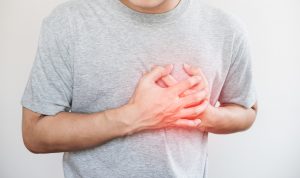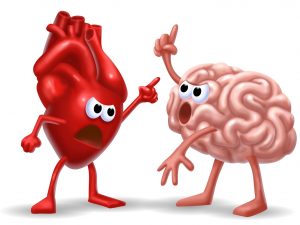 Staying active has many benefits. In particular, you may have been told by a healthcare provider to move more to help manage weight or improve heart health. However, a recent study has found that a walk in the park may also reduce stress levels in the body.
Staying active has many benefits. In particular, you may have been told by a healthcare provider to move more to help manage weight or improve heart health. However, a recent study has found that a walk in the park may also reduce stress levels in the body.
How Much Exercise Do I Need?
The Department of Helath and Human Services recommends that most adults exercise 30 minutes a day for most days of the week. In particular, it is suggested that most adults should engage in:
- 150 minutes of moderate activity a week or 75 minutes of vigorous activity a week, or a combination of both levels of activity.
- 2 days each week of resistance or strength training that involves a single set of exercises that includes 12 to 15 repetitions at a weight that will tire the muscles by the end of the set.
This thirty minutes does not have to be all at once. Five minutes here and ten minutes there is enough as long as it adds up to 30 minutes by the end of the day. Also, you may be wondering what moderate activity is. Moderate activity is any exercise that allows you to hold a conversation, but does not allow you enough breath to sing. In addition, you should break a light sweat within 10 minutes of a moderate activity, while vigorous activity will have you breaking a sweat in a few minutes or less. Moderate activities include:
- walking
- water aerobics
- gardening
- light dancing
- slow bicycling
Walking to Lower Stress
A study by researchers at the Center for Nature and Health at the University of California San Francisco looked at the effects of exercise on a group of 78 parents and children. This group of parents and children were encouraged to visit local parks as often as possible over the course of the study period. They were either provided maps to local parks and bus schedules or invited to group outings at local parks.
Follow-ups were done at one month and three months after the start of the study. During these follow-ups, self reports, journalling, and salivary cortisol levels were used to measure stress levels. It was found that every increase in park visits each week was linked to decreases in stress. In addition, it was found that those who visited the parks often saw:
- increased physical activity
- decreased loneliness
- increased interest in nature
Other Ways to Lower Stress
Besides getting fresh air and exercising, there are many ways you can try to lower your stress levels.
- Deep breathing can help relax the mind during stressful times and can also help improve sleep. This type of breathing involves breathing from the diaphragm, which means your stomach should inflate as you inhale and deflate as you exhale. Inhale for several seconds, hold your breath for several seconds, and exhale for several seconds. You may feel a bit lightheaded when starting this practice, so do not perform deep breathing when driving a car or operating machinery.
- Simplifying your life by donating items in your home that you do not use such as clothes, excess furniture, or decorative items. Also, delegate tasks when possible at both home and work if possible to lighten your load. Finally, write upcoming events on a calendar and keep a running shopping list so you can lighten the burden on your mind.
- Getting enough sleep is important not only for lowering stress, but for overall health. The average adult should get at least 7 to 9 hours of sleep each night.
- Eating a balanced diet that is low in sugar, high in fiber, and high in other nutrients such as iron, B12, and vitamin C will help your body perform better in many ways. Some benefits of a healthy, balanced diet include improved cognitive function, better heart health, and an enhanced ability to handle stress. This balanced diet also includes lowering caffeine, increasing water intake, and reducing alcohol intake as well as eating a minimally processed diet.
- Spending more time with others in your family, circle of friends, and/or community since social engagement can help boost “feel good” serotonin levels in the body.
- Taking mood-boosting supplements like Elevia by Vita Sciences. Elevia contains GABA, chamomile, and 5-HTP. These compounds can calm the mind and boost serotonin levels.
-written by Staci Gulbin, MS, MEd, RD, LDN
Sources:
Burton, M.D., N. (February 11, 2017) “How to Reduce Stress.”
Healthline (accessed March 5, 2018) “Parl Prescriptions Can Help Lower Stress Levels.”
Mayo Clinic (May 19, 2017) “Exercise intensity: how to measure it.”
National Sleep Foundation (accessed March 5, 2018) “How Much Sleep Do We Really Need?”
 Heart disease is the number one cause of death for both mean and women in the United States. Therefore, it is no surprise that researchers are looking endlessly for ways to reduce risk of this condition. A recent study has found that for those with diabetes, the earlier diagnosis, the lower the heart disease risk later on in life.
Heart disease is the number one cause of death for both mean and women in the United States. Therefore, it is no surprise that researchers are looking endlessly for ways to reduce risk of this condition. A recent study has found that for those with diabetes, the earlier diagnosis, the lower the heart disease risk later on in life. There’s nothing better than coming home after a long and stressful day of work or school, and having a happy wagging tail waiting at the door for you. Owning a pet involves a lot of work and cost. However, studies show that a pet may be worth the time and money for the good of your health. A recent study review has shown that having a pet can decrease anxiety and provide overall benefits to anyone suffering from mental health issues.
There’s nothing better than coming home after a long and stressful day of work or school, and having a happy wagging tail waiting at the door for you. Owning a pet involves a lot of work and cost. However, studies show that a pet may be worth the time and money for the good of your health. A recent study review has shown that having a pet can decrease anxiety and provide overall benefits to anyone suffering from mental health issues. Joint pain can stem from a variety of sources. Whether it be injury or chronic condition, pain can be a disruptive part of your daily lifestyle. You may need specialized medicine or other treatment to reduce some types of pain. However, you can reduce some types of pain with at-home treatments. A recent study has found that you can reduce some types of joint pain by simply losing a small amount of weight.
Joint pain can stem from a variety of sources. Whether it be injury or chronic condition, pain can be a disruptive part of your daily lifestyle. You may need specialized medicine or other treatment to reduce some types of pain. However, you can reduce some types of pain with at-home treatments. A recent study has found that you can reduce some types of joint pain by simply losing a small amount of weight. Vitamin D, known as the sunshine vitamin, is a very important nutrient for overall health. Best known for its work in helping strengthen bones and teeth, vitamin D is starting to get more attention for other benefits it could provide. A recent study reports that cells damaged by heart attack or stroke may be repaired by vitamin D3.
Vitamin D, known as the sunshine vitamin, is a very important nutrient for overall health. Best known for its work in helping strengthen bones and teeth, vitamin D is starting to get more attention for other benefits it could provide. A recent study reports that cells damaged by heart attack or stroke may be repaired by vitamin D3. Do you get stabbing abdominal cramps after eating a fatty meal? Does dairy or gluten cause uncomfortable gas and bloating? Are doctors unsure of the origin of your chronic constipation or diarrhea? If you answered yes to any of these questions, then you may have what is called Irritable Bowel Syndrome (IBS). Although changes in the diet may be helpful in many cases of IBS, research shows that vitamin D may also help those with this condition.
Do you get stabbing abdominal cramps after eating a fatty meal? Does dairy or gluten cause uncomfortable gas and bloating? Are doctors unsure of the origin of your chronic constipation or diarrhea? If you answered yes to any of these questions, then you may have what is called Irritable Bowel Syndrome (IBS). Although changes in the diet may be helpful in many cases of IBS, research shows that vitamin D may also help those with this condition. Sleep is a precious commodity in your busy life. Between work, taking care of loved ones, and running errands, it is a wonder you find time to sleep at all. However, it is important to make time for sleep because of all of the health benefits adequate sleep can provide. A recent study suggests that making a to-do list may help ease your mind so you can capture more sleep.
Sleep is a precious commodity in your busy life. Between work, taking care of loved ones, and running errands, it is a wonder you find time to sleep at all. However, it is important to make time for sleep because of all of the health benefits adequate sleep can provide. A recent study suggests that making a to-do list may help ease your mind so you can capture more sleep. Like millions of other people, you may be hoping to lose some weight in this new year. However, the confusing part may be what eating plan, or shall I say “diet,” should you choose to follow? There is so much information in the media today making all sorts of weight loss claims. They may all seem promising, but not all may provide you the nutrients you need to succeed long-term. However, a recent report found that the DASH diet may be the answer to get you to your weight loss goal.
Like millions of other people, you may be hoping to lose some weight in this new year. However, the confusing part may be what eating plan, or shall I say “diet,” should you choose to follow? There is so much information in the media today making all sorts of weight loss claims. They may all seem promising, but not all may provide you the nutrients you need to succeed long-term. However, a recent report found that the DASH diet may be the answer to get you to your weight loss goal. Every new year, many of us make resolutions to be healthier. Whether it be weight loss, exercising more, eating healthier, or managing stress better, such resolutions usually start off strong. However, by early spring, such goals usually lose steam and get pushed off until the next new year. That is why it is important to plan ahead before making any goals so you can make sure they are realistic and backed up with a lasting motivating factor. With such planning, you can make your new year’s goals come true this year and maintain such healthy habits for the long-term.
Every new year, many of us make resolutions to be healthier. Whether it be weight loss, exercising more, eating healthier, or managing stress better, such resolutions usually start off strong. However, by early spring, such goals usually lose steam and get pushed off until the next new year. That is why it is important to plan ahead before making any goals so you can make sure they are realistic and backed up with a lasting motivating factor. With such planning, you can make your new year’s goals come true this year and maintain such healthy habits for the long-term.